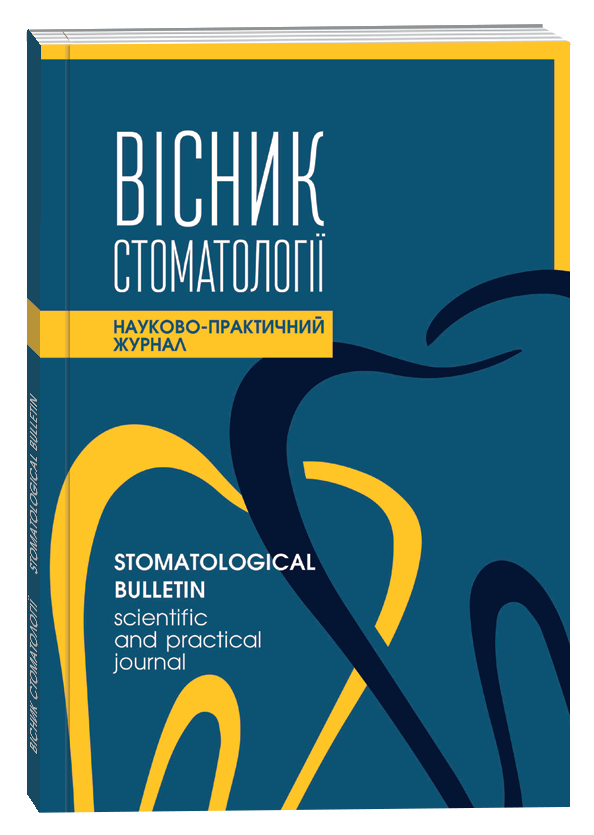TECHNOGENIC FACTORS OF THE WORK ENVIRONMENT AND THEIR IMPACT ON THE ORAL CAVITY
DOI:
https://doi.org/10.35220/2078-8916-2021-40-2.1Keywords:
iron ore production, oral cavityAbstract
Various technogenic factors negatively affect the dental status of those workers who work in harmful conditions. Research results indicate that there is a gradual increase in the prevalence of diseases of the oral cavity that correlates with increasing length of service. The study of the prevalence and risk factors for the formation of various forms of pathology among professional groups employed at iron ore production enterprises is currently a relevant topic. Тhe aim. To assess the state of oral hygiene and the activity of biochemical markers of the oral fluid in iron ore production workers; to reveal their correlation with the degree of exposure to harmful production factors. Materials and methods. The study involved 256 workers aged 20 to 60 years with work experience of 5–20 years, which constituted the main group of the surveyed. The level of the hygienic state of the oral cavity was assessed using the hygienic index proposed by Yu. A. Fedorov and V.V. Volodkina (1971), the Stallard (1969) index, and the J. Silness (1964), H. Loe (1967). In the oral fluid, biochemical markers were evaluated – the activity of catalase (a marker of the state of the antioxidant system) and lysozyme (the level of nonspecific resistance). Research results and discussion. The level of oral hygiene among industrial workers was significantly worse than the comparison group. n the oral fluid there is a significant decrease with age of miners activity of the enzyme catalase, a marker of antioxidant system and lysozyme, which reflects the level of nonspecific resistance, indicating a weakening of the body’s defenses and the formation of conditions for pathology of oral organs and tissues.
References
Юсупов З.Я., Бабаев А.Б., Ашуров Г.Г. О влиянии техногенных факторов производственной и окружающей среды на распространенность и структуру патологии зубочелюстной системы. Вестник Авиценны. 2017. № 2. С. 261–265
Леонтьева Е.Ю., Быковская Т.Ю., Тлепцеришев Р.А. Производственные биологические факторы и их влияние на челюстно-лицевую область: обзор. Главный врач юга России. 2017. №58. С. 7–10
Irram Abbas, Shakeel Anjum Mohammad, Parthasarathi Reddy Peddireddy, Monica Mocherla, Yadav Rao Koppula,Rajashekhar Avidapu. Oral Health Status of Underground Coal Mine Workers of Ramakrishnapur, Adilabad District, Telangana, India – A Cross-Sectional Study. Journal of Clinical and Diagnostic Research. 2016. Jan; 10(1). Р. 28–31.
Трофимчук А.А., Гуляева О.А., Каримова Л.К., Тухватуллина Д.Н. Состояние твердых тканей зубов у рабочих горнодобывающей промышленности. Проблемы стоматологии. 2016. №12(1). С. 56–61.
Груздева А.А. Влияние производственных факторов железорудного производства на ткани пародонта. Вісник стоматології. 2015. №1 (90). С. 39–42.
Груздева А.А., Глазунов О.А. Состояние тканей пародонта у рабочих железорудного производства (обзор литературы). Український стоматологічний альманах. 2016. № 4. С. 99–103.
Каролюк М.А., Иванова Л.И., Майорова Н.Т., Токарев К.Е. Метод определения активности каталазы. Лабораторное дело. 1988. № 1. С. 16–18.
Левицкий А.П. Лизоцим вместо антибиотиоков. Одесса : КП ОГТ, 2005. 74 с.
Реброва О.Ю. Статистический анализ медицинских данных. Применение пакета прикладных программ Statistica. Москва : Медиа Сфера, 2003. 312 с.









